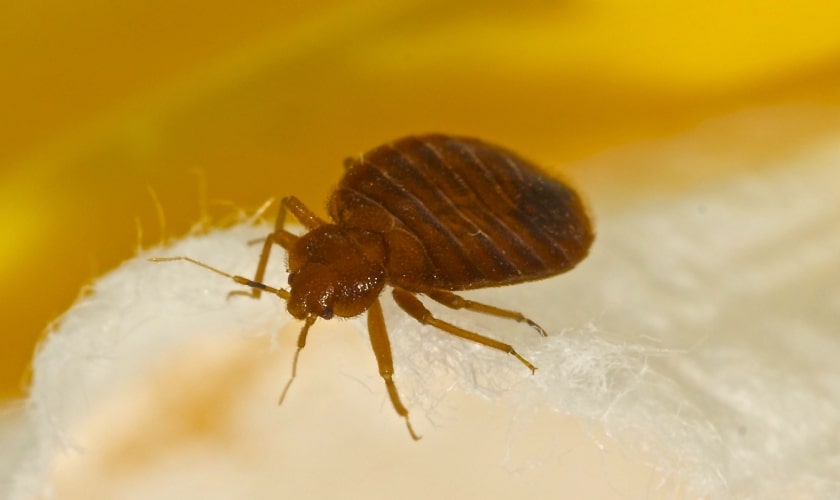Specialist Kings Bug Control Services Cincinnati OH
Kinds Of Insect Control: Which Technique Is Right for Your Problem?
When confronted with an insect problem, the option of an appropriate technique for pest control is important in properly taking care of the situation. From chemical treatments to organic services, there exists a variety of approaches that can be employed to address different kinds of parasites. Each method comes with its own set of factors to consider and benefits, making the decision-making process a nuanced one. Comprehending the nuances of each method and examining their compatibility with the certain insect invasion at hand is vital for accomplishing lasting success in insect management. By checking out the various types of insect control approaches readily available, people can make educated decisions tailored to their distinct conditions, making certain an extra sustainable and efficient result in insect removal.
Chemical Bug Control
Chemical insect control involves making use of synthetic or normally derived chemicals to take care of and eliminate pest populations properly. This method is generally used in farming, forestry, and domestic setups to deal with a wide variety of pests, including pests, weeds, and rats. Using chemical pesticides can provide fast and targeted solutions to pest problems, making it a popular option for many individuals and services.
Among the crucial benefits of chemical insect control is its capability to promptly eliminate insects, decreasing the threat of damage to crops, building, and human health. By utilizing particular chemicals that target certain pests, this method can successfully regulate problems while reducing injury to advantageous organisms and the atmosphere when used properly.
Nonetheless, using chemical insect control likewise increases worries concerning possible negative results on non-target varieties, water resources, and human health. It is essential to follow security standards, use chemicals sensibly, and take into consideration different parasite control approaches to decrease these risks and ensure lasting pest management methods.
Organic Bug Control
Biological parasite control, also recognized as biocontrol, uses living microorganisms to reduce and take care of bug populations normally. By using the bug's natural killers or virus, biological bug control offers a lasting and environmentally pleasant solution to pest administration.

Mechanical Pest Control
Utilizing hands-on and physical methods to manage parasite populations, mechanical pest control supplies a different strategy that does not count on using living organisms or artificial chemicals. This approach includes the use of obstacles, catches, or other tools to literally prevent or get rid of insects. By blocking parasite entry factors or establishing traps to catch them, mechanical parasite control can successfully minimize infestations without presenting chemicals right into the environment.
One usual instance of mechanical insect control is making use of mesh screens on doors and windows to avoid pests from going into buildings. This easy yet efficient technique acts as a physical obstacle, keeping pests out while permitting appropriate ventilation. In addition, gadgets like mousetraps, fly swatters, and ultrasonic repellents fall under the mechanical bug control category.
While mechanical parasite control techniques can be labor-intensive and require normal tracking and upkeep, they provide a lasting and eco-friendly solution for handling pest invasions. By combining different mechanical strategies, building owners can develop a comprehensive bug control strategy that decreases reliance on chemical pesticides.
Physical Bug Control

Some typical physical pest control approaches include making use of obstacles such as displays or internet to stop bug access, catches to catch and remove pests, and hand-picking to physically remove bugs from plants or frameworks. In addition, methods like heat treatments can be used to control pests like bed insects by raising the temperature level to degrees that are deadly to the insects.
Physical parasite control is especially helpful in incorporated pest monitoring (IPM) methods, where multiple parasite control techniques are combined for reliable insect management while decreasing using chemicals. By utilizing physical bug control techniques, people can efficiently attend to bug problems with minimal environmental influence.
Integrated Parasite Management
When implementing physical bug control methods as component website link of pest administration strategies, Integrated Pest Monitoring (IPM) emerges as a detailed approach that leverages different strategies to efficiently regulate pest populaces. IPM focuses on lasting prevention of insects via a mix of biological, social, physical, and chemical tools tailored to certain parasite issues. By integrating numerous control tactics, IPM intends to decrease the risks related to bugs while additionally reducing reliance on chemical options.
One key element of IPM is the focus on surveillance and assessing pest populations to figure out one of the most ideal control methods. This positive technique enables early intervention and targeted methods, causing extra reliable pest management. Additionally, IPM promotes eco-friendly techniques by focusing on non-chemical control approaches and just making use of chemicals as a ant killer last option.
Final Thought

By making use of the bug's all-natural predators or microorganisms, organic parasite control supplies a ecologically pleasant and lasting option to pest monitoring. - Kings pest control services Cincinnati oh
Utilizing physical and hands-on approaches to take care of parasite populaces, mechanical pest control offers an alternative technique that does not count on the usage of living microorganisms or artificial chemicals.A reliable approach to taking care of bug populations without depending on chemical or biological methods involves the use of physical pest control techniques.When implementing physical pest control methods as part of pest management strategies, Integrated Bug Administration (IPM) emerges as an extensive method that leverages numerous strategies to properly regulate pest populations. Chemical insect control involves the usage of chemicals, biological pest control uses all-natural predators, mechanical pest control entails physical obstacles, physical insect control includes capturing or eliminating pests, and integrated parasite administration integrates multiple techniques for an alternative method to pest control.